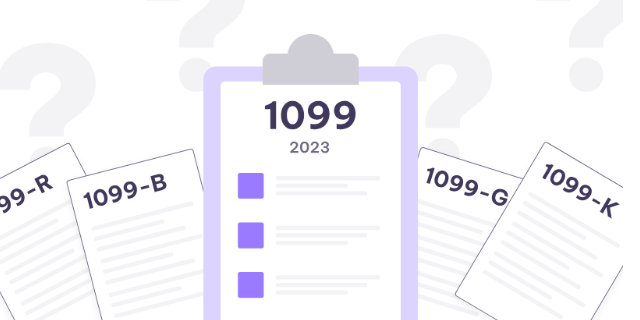Understanding the 1099-R Form: A Complete Guide

When it comes to filing taxes in the United States, the 1099-R form is one of the most important documents many taxpayers will receive. This form is used to report distributions from pensions, retirement accounts, IRAs, annuities, profit-sharing plans, or insurance contracts. If you have withdrawn money from your retirement savings, rolled over funds, or received certain payouts, you will likely get a 1099-R from your financial institution or employer.
Many people find the 1099-R form confusing at first, especially when they see codes and numbers across different boxes. However, understanding this form is essential because the IRS also receives a copy. If you do not report it correctly, you may face penalties or extra taxes. In this article, we will break down the 1099-R in simple terms so you can understand what it is, why you receive it, and how to use it during tax season.
What is a 1099-R Form
The 1099-R is an official IRS tax document that reports distributions of $10 or more from retirement-related accounts or similar sources. Some common examples include:
- Pension distributions
- 401(k) withdrawals
- IRA distributions (Traditional, SEP, or SIMPLE IRAs)
- Roth IRA withdrawals
- Insurance contract payouts
- Annuities or profit-sharing plan payments
The issuer, usually a financial institution, pension fund, or insurance company, sends this form to both the taxpayer and the IRS. This ensures transparency, so both you and the government know how much money was taken out of retirement accounts.
Who Receives a 1099-R
You may receive a 1099-R if:
- You withdrew money from a retirement account.
- You received pension or annuity payments.
- You rolled over funds from one retirement account to another.
- You took early distributions before age 59½.
- You inherited an IRA or retirement account and took distributions.
Essentially, if you had any taxable (or sometimes non-taxable) distributions from retirement-related accounts, you should expect a 1099-R in the mail by the end of January.
Breaking Down the 1099-R Form
The 1099-R form may look complicated, but each box has a specific purpose. Here’s what the key sections mean:
- Box 1 (Gross Distribution): The total amount distributed to you.
- Box 2a (Taxable Amount): The portion of your distribution that is taxable.
- Box 2b (Taxable Amount Not Determined): Checked if the payer cannot determine the taxable amount.
- Box 4 (Federal Income Tax Withheld): The tax already withheld from your distribution.
- Box 7 (Distribution Codes): A letter or number that explains the type of distribution (such as early withdrawal, normal distribution, or rollover).
- Box 12-13: State information, such as state taxes withheld.
The distribution code in Box 7 is especially important because it tells the IRS if penalties or special rules apply. For example:
- Code 1: Early distribution, no known exception.
- Code 2: Early distribution, exception applies.
- Code 7: Normal distribution (after retirement age).
Why is the 1099-R Important for Taxes
The IRS uses the 1099-R to ensure you correctly report income from retirement accounts. If you fail to include this income on your tax return, you may receive a notice or be charged additional tax and penalties.
For taxpayers, the 1099-R helps in several ways:
- It tells you how much money you received from retirement accounts.
- It shows how much of the distribution is taxable.
- It reports how much tax was already withheld, reducing the risk of underpayment.
- It ensures you apply the right tax treatment to rollovers, early withdrawals, or exceptions.
Taxable vs. Non-Taxable Distributions
Not all money on the 1099-R is taxable. Some distributions may not increase your tax bill:
- Rollovers: If you moved money directly from one retirement account to another (like from a 401k to an IRA), it usually isn’t taxable.
- After-tax contributions: If part of your retirement contributions was already taxed, that portion may not be taxed again.
- Qualified Roth IRA withdrawals: If you meet the age and holding requirements, these may be tax-free.
However, withdrawals from traditional IRAs, pensions, and most 401(k)s are usually taxable as ordinary income.
Penalties for Early Withdrawals
The IRS imposes an additional 10% penalty if you take money out of a retirement account before age 59½, unless an exception applies. Exceptions may include:
- Disability
- Certain medical expenses
- First-time home purchase (from IRAs)
- Qualified education expenses
- Substantially equal periodic payments
If an exception applies, it will often be indicated in the distribution code on your 1099-R.
How to File Taxes with a 1099-R
When filing your tax return, you will need to report the information from your 1099-R. If you use tax software, it will usually prompt you to enter the details from each box. If you use a tax professional, simply provide them with the form.
The important steps include:
- Enter the gross distribution (Box 1).
- Enter the taxable amount (Box 2a).
- Apply withholding (Box 4) to reduce your tax bill.
- Use distribution codes (Box 7) to apply correct rules.
Always double-check your numbers against your form to avoid mistakes.
Common Mistakes to Avoid with a 1099-R
- Ignoring the form and not reporting distributions.
- Failing to report a rollover properly.
- Misunderstanding which part of the distribution is taxable.
- Forgetting about state taxes shown in Boxes 12–13.
- Overlooking penalties for early withdrawals.
Conclusion
The 1099-R form is a critical document for anyone who received retirement distributions during the year. While it may look complicated, understanding each box and how to report it can save you from tax trouble. Always review your 1099-R carefully, report it accurately on your tax return, and consider consulting a tax professional if you’re unsure about specific codes or amounts. By handling your 1099-R correctly, you ensure compliance with IRS rules and avoid unnecessary penalties.
FAQs
Q1. When will I receive my 1099-R?
Most issuers send 1099-R forms by January 31 each year.
Q2. What if I don’t receive my 1099-R?
Contact your financial institution or pension provider. You can also check if it’s available online.
Q3. Do I have to pay taxes on the entire distribution?
Not always. Some distributions (like Roth IRA withdrawals or rollovers) may not be taxable. Check Box 2a for the taxable amount.
Q4. What happens if I forget to include my 1099-R on my taxes?
The IRS may send you a notice and charge additional tax, interest, and penalties.
Q5. Can I avoid the 10% early withdrawal penalty?
Yes, if you qualify for an exception, such as disability, higher education costs, or first-time home purchase from an IRA.





